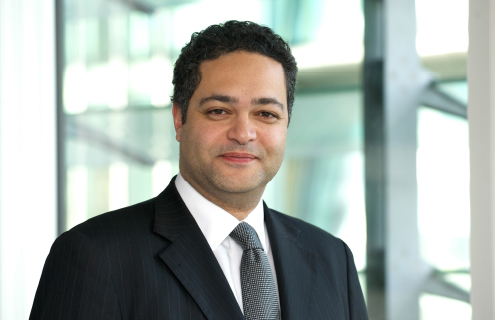Markit Securities Finance
Pierre Khemdoudi
24 March 2015
Markit managing director of securities finance Pierre Khemdoudi provides an update on a key collateral initiative that will be presented at the Securities Finance Forum in London, and runs through the discussion points
 Image: Shutterstock
Image: Shutterstock
The fifteenth Securities Finance Forum is fast approaching—what does the event mean to Markit?
We have been hosting our Securities Finance Forum for 15 years. As a company, we have always been at the heart of the market and this forum is very important for participants as it is a great place to hear from industry leaders. It is also the only place to get a complete 360-degree view of the market. Participants come to join the discussion from all corners of the securities finance market, including beneficial owners, custodians, lenders, prime brokers and hedge funds. We continue to challenge ourselves and have conversations with our customers to ensure the panels are relevant and fresh. This year is no exception.
There will be a dedicated ETF presentation on the agenda—what will that entail?
We will provide a brief update on an exciting industry-wide initiative involving the use of exchange-traded funds (ETFs) as eligible collateral. The genesis of this is really that regulation is creating demand for greater use of collateral while ETFs have historically been an asset class that has been difficult to integrate into collateral eligibility schedules. Markit is leading a project that aims to help borrowers and lenders optimise their ETF products within collateral eligibility schedules.
The initiative is about creating a schedule of eligible ETFs that that are acceptable to agent lenders for use within their collateral eligibility schedules. Markit is well positioned to help the industry because we are independent and understand the securities finance market. We also have deep domain expertise through our holistic ETF datasets tracking more than 6,000 ETFs globally. We can drill down to the meta data to show how they are composed, their assets under management, their strategies, and so a whole suite of information that collateral managers would need to know before they could consider including a basket of ETFs within eligibility schedules.
With this information we are making ETFs more relevant to the securities finance business. It is still early days, but the ultimate goal is to help stimulate the ETF market, especially create to lend in Europe.
The first panel of the day aims to set the scene—what will it cover?
Prime brokers and agent lenders will use the panel as an opportunity to take the pulse of the securities finance industry. It will look back at 2014 and review the year. The panellists will also pose questions about winning strategies from last year. We will also assess how the market is coping with new regulation, such as the liquidity coverage ratio and Basel III. This year will stand out as the year for implementation.
When thinking about winning strategies, the panel will probably focus on short interest around US initial public offerings, as well as merger and acquisition activity. We will present data so attendees will receive a useful holistic view of what the market looked like in 2014, as a foundation for what to expect in the future.
The second session will see the buy side take to the stage—what can we expect from them?
This is a buy-side session that will almost be a mirror image of the first panel. The panellists will share their views on the securities finance industry and while the buy side’s interests are aligned with lenders, they also have their own agenda. There are genuine questions about the costs of indemnification, the broadening of eligible collateral, and the use of term structure trades, especially around equity repo.
All of this will be of interest to our attendees, because some them are providers of liquidity, while others are takers.
Why did you decide to end the day with a panel on repo, stock loan and synthetics?
Our hope is that the first two panels will essentially act as a building block for the final panel, which will look at the future of securities finance industry and what lies ahead for us. It will look across all of securities finance, which is why it has been broken down into repo, stock loan and synthetics. We want to steer the conversation to consider market structure, and more importantly, the increasingly blurred lines between repo, synthetic lending and traditional securities lending. We have assembled a mixed panel to be able to navigate through these three main businesses and try to understand what the future will hold.
How important are synthetics becoming to securities finance?
Synthetics have always been there. What we think, and hopefully our panel will shed more insight on, is that when capital consumption is taken into consideration, synthetics are a very efficient product. Add central counterparties (CCPs) to this and it becomes an even more efficient mechanism.
In theory, synthetics offer the same economic returns as using a repo or stock loan, but without the capital considerations. Although they have been available for years, synthetics are mainly traded by banks, and we believe that capital consumption will change the industry’s dynamic as some securities lending business moves to CCPs. These are good questions to be posing to our panel.
← Previous interview
EquiLend
Andrew McCardle
Next interview →
SunGard
Tim Smith
 Image: Shutterstock
Image: Shutterstock 